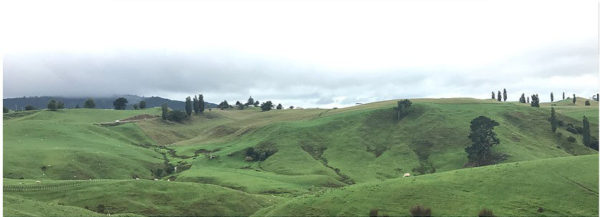
On Sunday I visited Hobbiton, the movie set for The Lord of the Rings and The Hobbit. Surrounded by rolling green hills dotted with grazing sheep, the scenery is peaceful and beautiful.
In all honesty and to the dismay of the friends I went to Hobbiton with, I have not read or seen either the Lord of the Rings or the Hobbit. The fantastical aspect to the stories has pushed me away from any possible interest; how can a film or book that has such mystical qualities be accessible to any reader? How can I connect to a story based in fantasy and magic?
The movie set, however, allows for that sense of connection and accessibility that seems to lack in the storyline of the books and movies. The agricultural nature to the land—it is, after all, a working farm—calls upon the purity of human life. Although one is surrounded by little dwarf homes, there is goodness to the landscape that acts as a reminder to the quintessence of being human and feeling small in an utterly vast world.
Not only is the pureness of the landscape a reminder of the simplicity of the human experience, but the permanence to the movie set is unique and quite special. The choice to keep the movie set up, to maintain it even after the filming of the movies, and to allow visitors to come and see it reminds me of Sonnet 18 by Shakespeare in which he articulates that although each of us experiences mortality, beauty can survive forever in the works (art, poetry, literature, architecture) that we leave behind: “so as long as men can breathe, or eyes can see, / so long live this, and this gives life to thee.” That feeling of human creation is palpable at Hobbiton, the effort that the creators put into creating a set that inspires awe and magic.
So although I have yet to read or see either the Lord of The Rings or the Hobbit, Hobbiton provides a sense of beauty and magic for those that visit; it reminds us of the immortality of human creation and the power that it can bring from the past to the present.